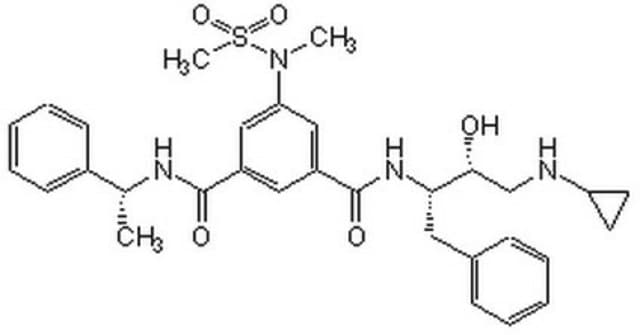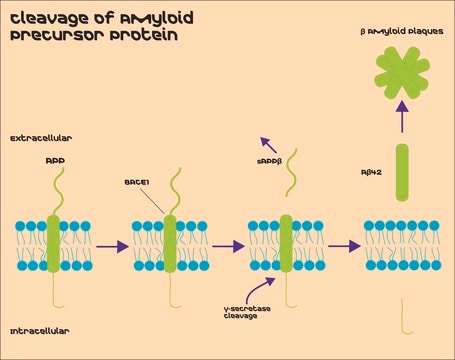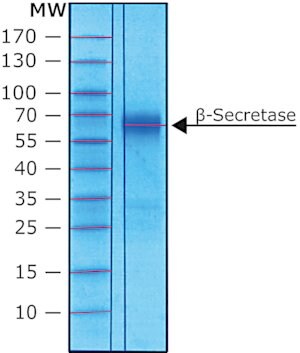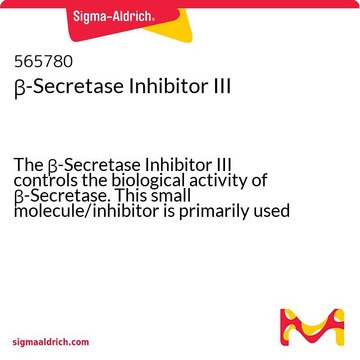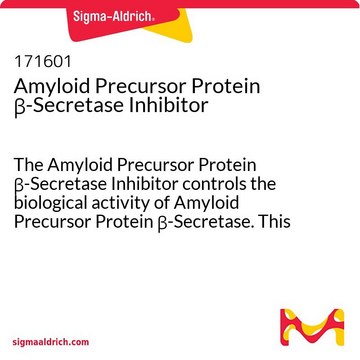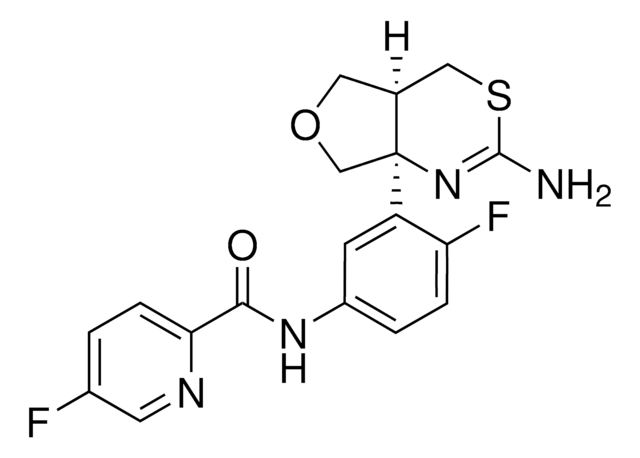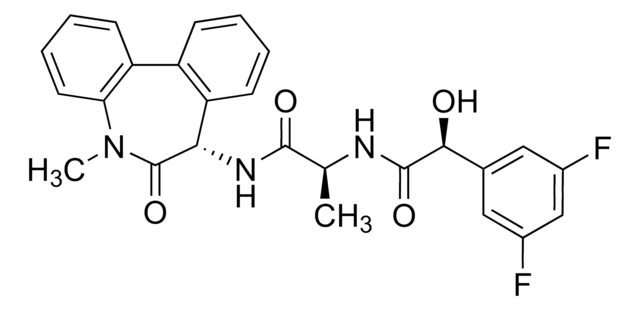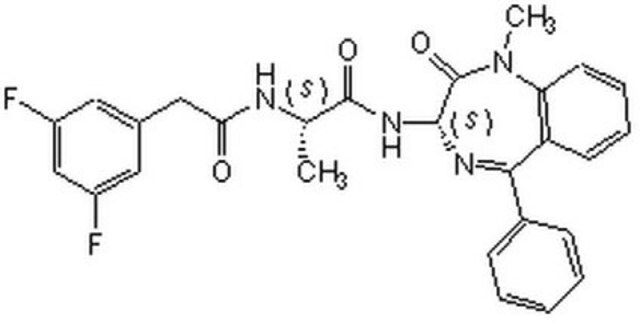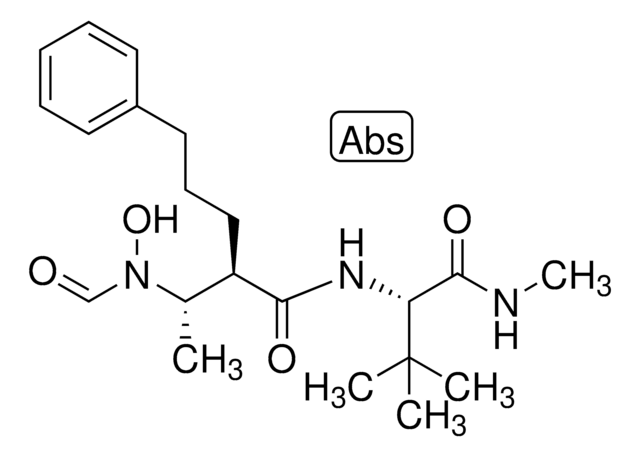All Photos(1)
About This Item
Empirical Formula (Hill Notation):
C73H118N16O27
Molecular Weight:
1651.81
MDL number:
UNSPSC Code:
12352200
NACRES:
NA.77
Recommended Products
biological source
synthetic (organic)
Quality Level
Assay
≥97% (HPLC)
form
powder
mol wt
~_1.65 kDa
color
white
mp
200 °C
solubility
DMSO: soluble
shipped in
dry ice
storage temp.
−20°C
Amino Acid Sequence
Lys-Thr-Glu-Glu-Ile-Ser-Glu-Val-Asn-Sta-Val-Ala-Glu-Phe
General description
β-Site amyloid precursor protein (APP) cleaving enzyme-1 (BACE1), an aspartic protease belongs to the protease family of enzymes comprises of six luminal cysteine residues. These residues help in the formation of three intermolecular disulfide bonds and N-linked glycosylation sites.
Application
β-Secretase inhibitor has been used as β-site amyloid precursor protein (APP) cleaving enzyme-1 (BACE1) inhibitor in BACE1 inhibitor assay.(2)
β-Secretase inhibitor may be used to inhibit BACE1 in studies related to AD.
Biochem/physiol Actions
β-Site amyloid precursor protein (APP) cleaving enzyme-1 (BACE1) is a β-secretase that initiates the production of amyloid protein in Alzheimer′s dieases (AD) patients. β-Secretase inhibitors decrease the generation of β amyloid and formation of amyloid plaques typical of AD.
Storage Class Code
11 - Combustible Solids
WGK
WGK 3
Flash Point(F)
Not applicable
Flash Point(C)
Not applicable
Personal Protective Equipment
dust mask type N95 (US), Eyeshields, Gloves
Choose from one of the most recent versions:
Already Own This Product?
Find documentation for the products that you have recently purchased in the Document Library.
Customers Also Viewed
Jungmi Lee et al.
Analytica chimica acta, 1022, 89-95 (2018-05-08)
Amyloid-β (Aβ) is generated by proteolytic processing of amyloid precursor protein (APP) by beta-secretase (BACE-1) and gamma-secretase. Amyloid-β is responsible for the formation of senile plaques in Alzheimer's disease (AD). Consequently, inhibition of β-secretase (BACE-1), a rate-limiting enzyme in the
Hans Hilpert et al.
Journal of medicinal chemistry, 56(10), 3980-3995 (2013-04-18)
An extensive fluorine scan of 1,3-oxazines revealed the power of fluorine(s) to lower the pKa and thereby dramatically change the pharmacological profile of this class of BACE1 inhibitors. The CF3 substituted oxazine 89, a potent and highly brain penetrant BACE1
beta-secretase inhibitor; a promising novel therapeutic drug in Alzheimer?s disease
Menting KW, et al.
Frontiers in Aging Neuroscience, 6, 165-165 (2014)
S Sinha et al.
Nature, 402(6761), 537-540 (1999-12-11)
Proteolytic processing of the amyloid precursor protein (APP) generates amyloid beta (Abeta) peptide, which is thought to be causal for the pathology and subsequent cognitive decline in Alzheimer's disease. Cleavage by beta-secretase at the amino terminus of the Abeta peptide
Patty C Kandalepas et al.
Acta neuropathologica, 126(3), 329-352 (2013-07-04)
β-Site amyloid precursor protein (APP) cleaving enzyme-1 (BACE1) is the β-secretase that initiates Aβ production in Alzheimer's disease (AD). BACE1 levels are increased in AD, which could contribute to pathogenesis, yet the mechanism of BACE1 elevation is unclear. Furthermore, the
Our team of scientists has experience in all areas of research including Life Science, Material Science, Chemical Synthesis, Chromatography, Analytical and many others.
Contact Technical Service